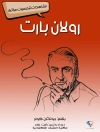Seminar paper from the year 2005 in the subject English Language and Literature Studies – Linguistics, grade: gut, University of Cologne (Englisches Seminar), course: English Word Formation / Morphology, language: English, abstract: “Apart from derivation, compounding is the most important event within the process of word formation, i.e. the combination of two or more freely distributed morphemes or morpheme sequences (words) to a compound, whereby – as a rule – the last constituent determines both word of speech, as well as inflectional class” (BUßMANN 2002: 360). This definition of compounding is based on several linguistic works and theories, one of which Elisabeth Selkirk’s Syntax of Words is one of. This work will focus on Selkirk’s account of compounding and make a comparison between the English and Dutch language. Thereby, I will summarize Selkirk’s main points and contrast them to comparable qualities of the Dutch language. My aim is to examine whether or not and in what way Selkirk’s account of compounding in English is universally applicable. This examination will comprise the main topics Headedness, Right-hand Head Rule, Percolation, and First Order Projection Condition. Headedness, Right-hand Head Rule, and Percolation in English In her work The Syntax of Words, Selkirk defines English compounds to be “a type of word structure made up of two constituents, each belonging to one of the categories Noun, Adjective, Verb, or Preposition” (1982: 13). She suggests a context-free grammar for generating compound word structures – consisting of a set of context-free rewriting rules – (cf. 1982: 13 – 16). and furthermore differentiates endocentric compounds from exocentric (nonheaded) compounds. The first kind shows a head customary on the right and is predominant in English (cf. 1982: 19) (such as in snowflake, songwriter, starlight, and underground), while the second, rather exceptional kind has no head at all (cf. 1982: 19) (such as in hunchback, pickpocket, lazybones, cutthroat, and redskin). However, the denotation of a head is controversial. Williams proposed the so-called “Right-hand Head Rule” (RHR), which says that “the righthand member of a morphologically complex word is the head of that word”, what entails that the rightmost constituent determines all the properties of the whole (cf. 1981a: 245 – 274). Such would be the case in the following examples: […]
Christian Hensgens
About the universal Validity of Selkirk’s Account of Compounding: A Comparison between English and Dutch. [PDF ebook]
About the universal Validity of Selkirk’s Account of Compounding: A Comparison between English and Dutch. [PDF ebook]
ซื้อ eBook เล่มนี้และรับฟรีอีก 1 เล่ม!
ภาษา อังกฤษ ● รูป PDF ● ISBN 9783638369367 ● ขนาดไฟล์ 0.5 MB ● สำนักพิมพ์ GRIN Verlag ● เมือง München ● ประเทศ DE ● การตีพิมพ์ 2005 ● ฉบับ 1 ● ที่สามารถดาวน์โหลดได้ 24 เดือน ● เงินตรา EUR ● ID 3704229 ● ป้องกันการคัดลอก ไม่มี












